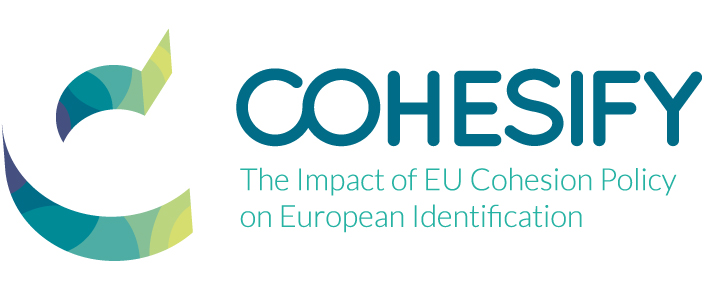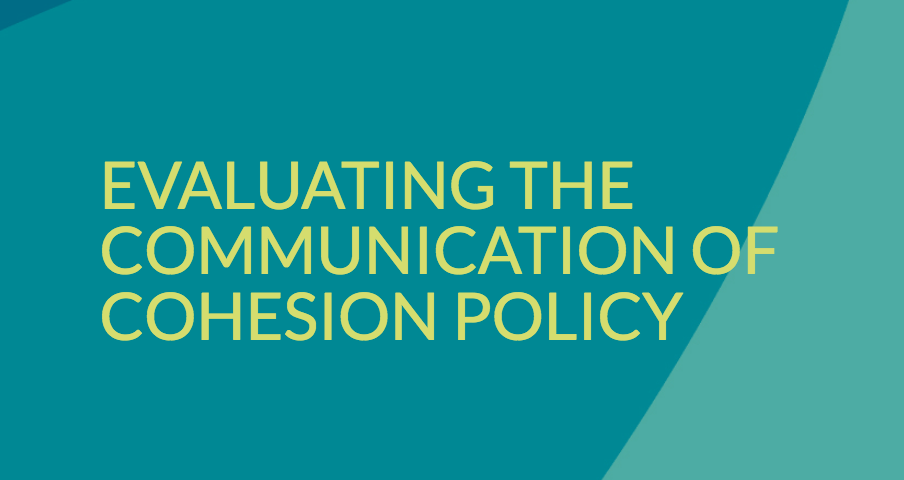
Cohesion policy in EU crisis
November 27, 2017
The effect of EU Cohesion Policy on parties’ support for European integration
December 11, 2017Communication is an integral part of the Cohesion Policy which aims to highlight the contribution of the European Union to national and local development, to ensure that potential beneficiaries know about available funding opportunities, and ultimately to contribute to the creation of a shared European identity.
But how do policy-makers make sure that these goals are achieved? In other words, how are the effects of communication activities currently evaluated?
Evaluation is one of the key aspects of any public policy because, simply put, allows policy-makers to check whether a particular intervention works or not. In the case of the communication policies for Cohesion Funds, evaluations are usually planned at the inception of each programming period and carried out annually. However, most of the time, these are not evaluations in the real sense of the word, meaning exercises aimed at measuring the net effects of communication measures but descriptive summaries which show whether particular output or outcome indicators have been met. These indicators can cover a range of communication activities from the number of publications printed in a specific interval of time, to the number of daily visits to a particular website or the level of knowledge that citizens have about structural funds in general. Annual implementation reports usually make use of these data to show whether communication targets have been met and to plan for measures to be undertaken in the future.
An obvious problem with this dominant approach to evaluating communication is that it fails to explain why changes in various indicators occur. For example, changes in individual attitudes towards the EU can be explained by any number of factors including politics and political communication, changes in the economy or individual variables such as the level of education. Furthermore, while having data about the number of printed materials, press releases, or website usages is important from an accounting perspective, it is less useful to look at these data when we aim to understand whether it is communication of Cohesion Policy and not some other factor that had any impact on individual perceptions.
Evaluation is one of the key aspects of any public policy because, simply put, allows policy-makers to check whether a particular intervention works or not. In the case of the communication policies for Cohesion Funds, evaluations are usually planned at the inception of each programming period and carried out annually. However, most of the time, these are not evaluations in the real sense of the word, meaning exercises aimed at measuring the net effects of communication measures but descriptive summaries which show whether particular output or outcome indicators have been met. These indicators can cover a range of communication activities from the number of publications printed in a specific interval of time, to the number of daily visits to a particular website or the level of knowledge that citizens have about structural funds in general. Annual implementation reports usually make use of these data to show whether communication targets have been met and to plan for measures to be undertaken in the future.
An obvious problem with this dominant approach to evaluating communication is that it fails to explain why changes in various indicators occur. For example, changes in individual attitudes towards the EU can be explained by any number of factors including politics and political communication, changes in the economy or individual variables such as the level of education. Furthermore, while having data about the number of printed materials, press releases, or website usages is important from an accounting perspective, it is less useful to look at these data when we aim to understand whether it is communication of Cohesion Policy and not some other factor that had any impact on individual perceptions.
To solve the problems raised by relying on descriptive accounts involves moving towards a more systematic evaluation practice that is based on counterfactual analysis. This is by no means something new in the policy evaluation circles but is a change that could contribute enormously to our understanding of the effects of communication measures financed through Cohesion Policy. Such a change would involve a better planning of the communication measures but also making policy evaluation a core activity of communication. Since counterfactual analysis is data intensive, using such methods would mean that data collection would have to be carried out both before and after the implementation of various communication measures.
While this approach to evaluation is currently being used in order to quantify the effects of the implementation of various measures financed through Cohesion Policy, there is no reason why they should not be used in analysing the effects of communication as well. This would ensure that policy-makers would be able update communication measures depending on the effectiveness of passed interventions, to have a more targeted approach to communication, but also to spend available resources in a more effective manner.
While this approach to evaluation is currently being used in order to quantify the effects of the implementation of various measures financed through Cohesion Policy, there is no reason why they should not be used in analysing the effects of communication as well. This would ensure that policy-makers would be able update communication measures depending on the effectiveness of passed interventions, to have a more targeted approach to communication, but also to spend available resources in a more effective manner.
Dragos Adascalitei COHESIFY Research Fellow at Central European University Center for Policy Studies

